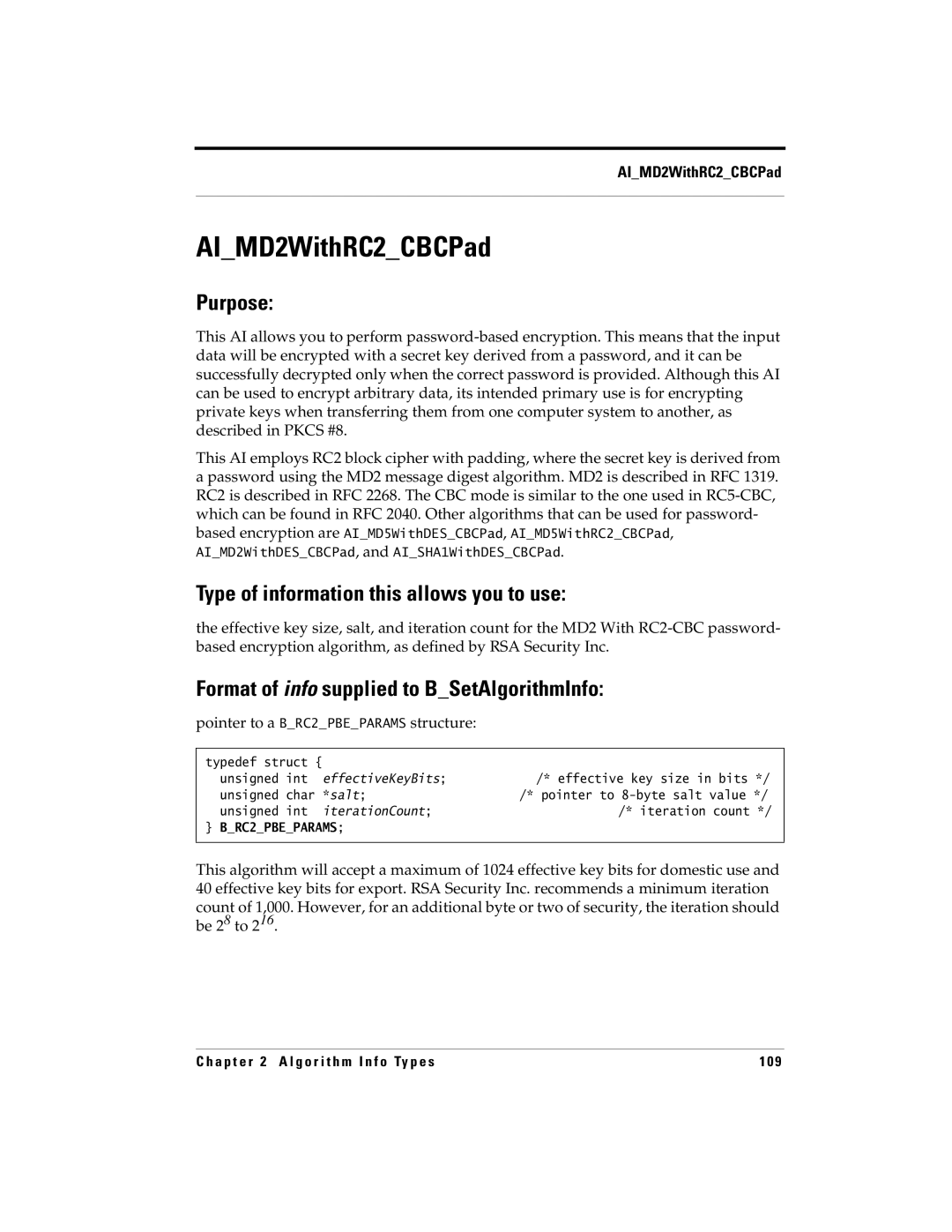
AI_MD2WithRC2_CBCPad
AI_MD2WithRC2_CBCPad
Purpose:
This AI allows you to perform
This AI employs RC2 block cipher with padding, where the secret key is derived from a password using the MD2 message digest algorithm. MD2 is described in RFC 1319. RC2 is described in RFC 2268. The CBC mode is similar to the one used in
Type of information this allows you to use:
the effective key size, salt, and iteration count for the MD2 With
Format of info supplied to B_SetAlgorithmInfo:
pointer to a B_RC2_PBE_PARAMS structure:
typedef struct { |
|
|
unsigned int | effectiveKeyBits; | /* effective key size in bits */ |
unsigned char | *salt; | /* pointer to |
unsigned int | iterationCount; | /* iteration count */ |
}B_RC2_PBE_PARAMS;
This algorithm will accept a maximum of 1024 effective key bits for domestic use and 40 effective key bits for export. RSA Security Inc. recommends a minimum iteration
count of 1,000. However, for an additional byte or two of security, the iteration should be 28 to 216.
C h a p t e r 2 A l g o r i t h m I n f o Ty p e s | 109 |
